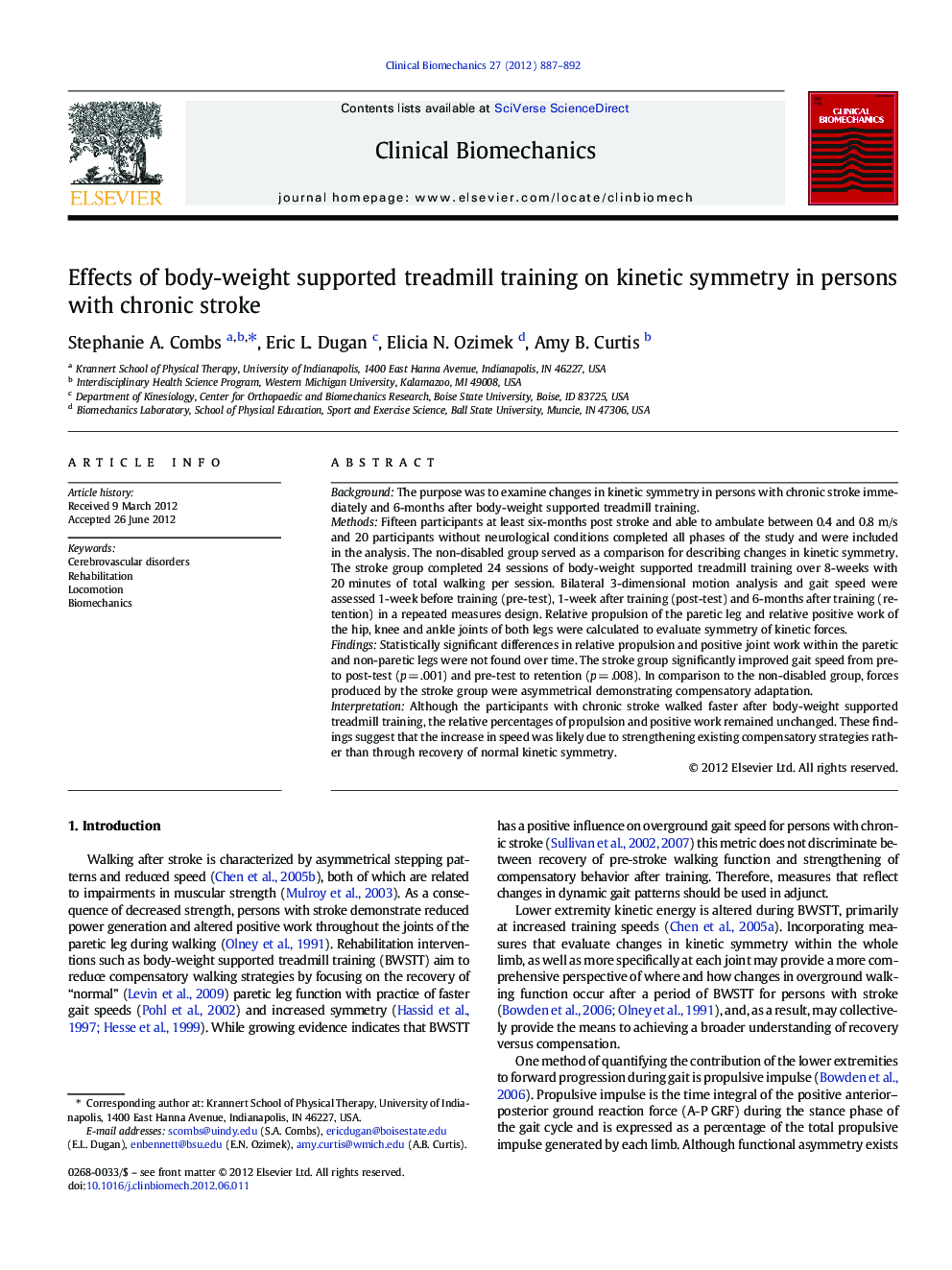| کد مقاله | کد نشریه | سال انتشار | مقاله انگلیسی | نسخه تمام متن |
|---|---|---|---|---|
| 6204978 | 1264934 | 2012 | 6 صفحه PDF | دانلود رایگان |

BackgroundThe purpose was to examine changes in kinetic symmetry in persons with chronic stroke immediately and 6-months after body-weight supported treadmill training.MethodsFifteen participants at least six-months post stroke and able to ambulate between 0.4 and 0.8 m/s and 20 participants without neurological conditions completed all phases of the study and were included in the analysis. The non-disabled group served as a comparison for describing changes in kinetic symmetry. The stroke group completed 24 sessions of body-weight supported treadmill training over 8-weeks with 20 minutes of total walking per session. Bilateral 3-dimensional motion analysis and gait speed were assessed 1-week before training (pre-test), 1-week after training (post-test) and 6-months after training (retention) in a repeated measures design. Relative propulsion of the paretic leg and relative positive work of the hip, knee and ankle joints of both legs were calculated to evaluate symmetry of kinetic forces.FindingsStatistically significant differences in relative propulsion and positive joint work within the paretic and non-paretic legs were not found over time. The stroke group significantly improved gait speed from pre- to post-test (p = .001) and pre-test to retention (p = .008). In comparison to the non-disabled group, forces produced by the stroke group were asymmetrical demonstrating compensatory adaptation.InterpretationAlthough the participants with chronic stroke walked faster after body-weight supported treadmill training, the relative percentages of propulsion and positive work remained unchanged. These findings suggest that the increase in speed was likely due to strengthening existing compensatory strategies rather than through recovery of normal kinetic symmetry.
Journal: Clinical Biomechanics - Volume 27, Issue 9, November 2012, Pages 887-892